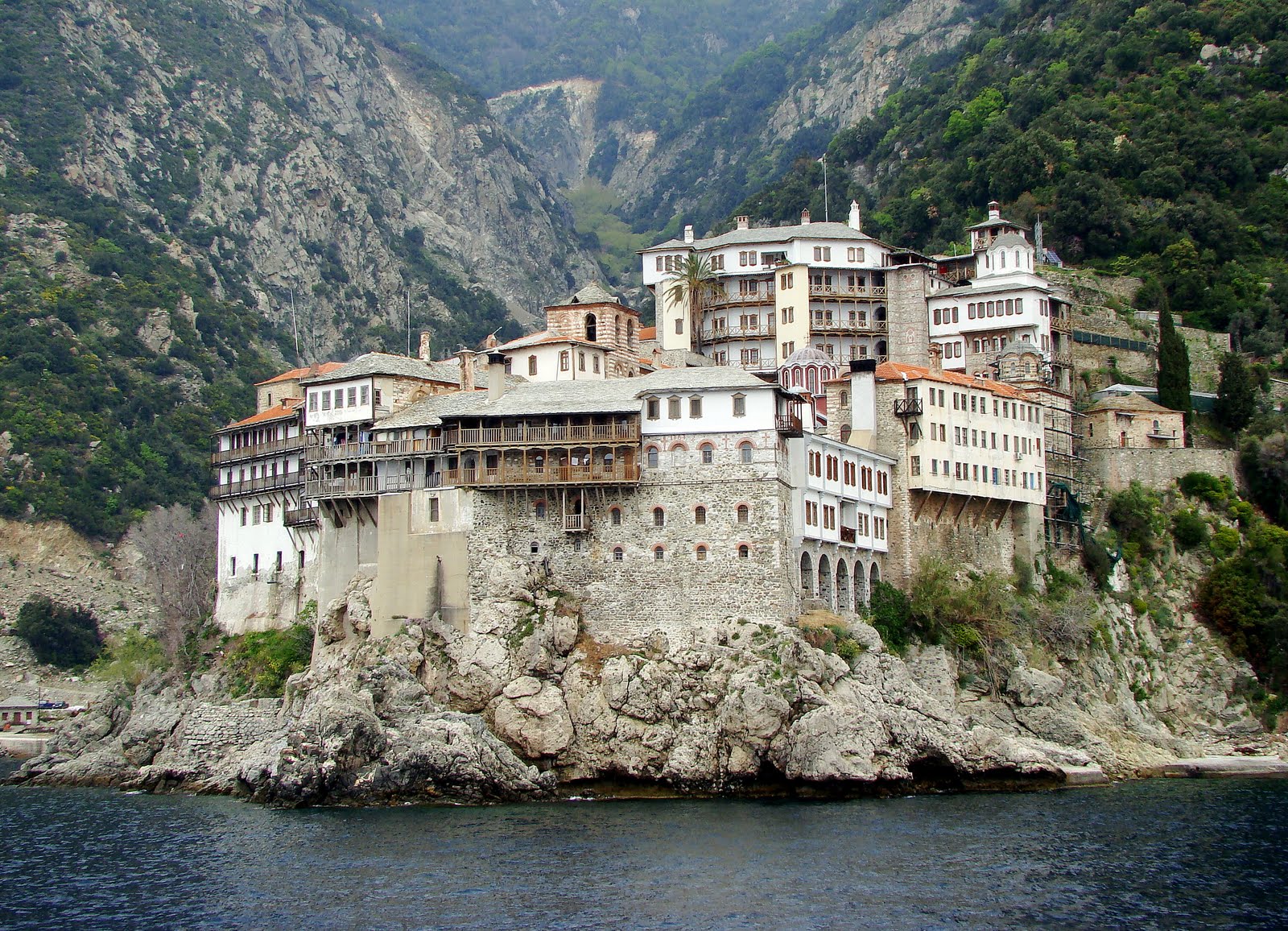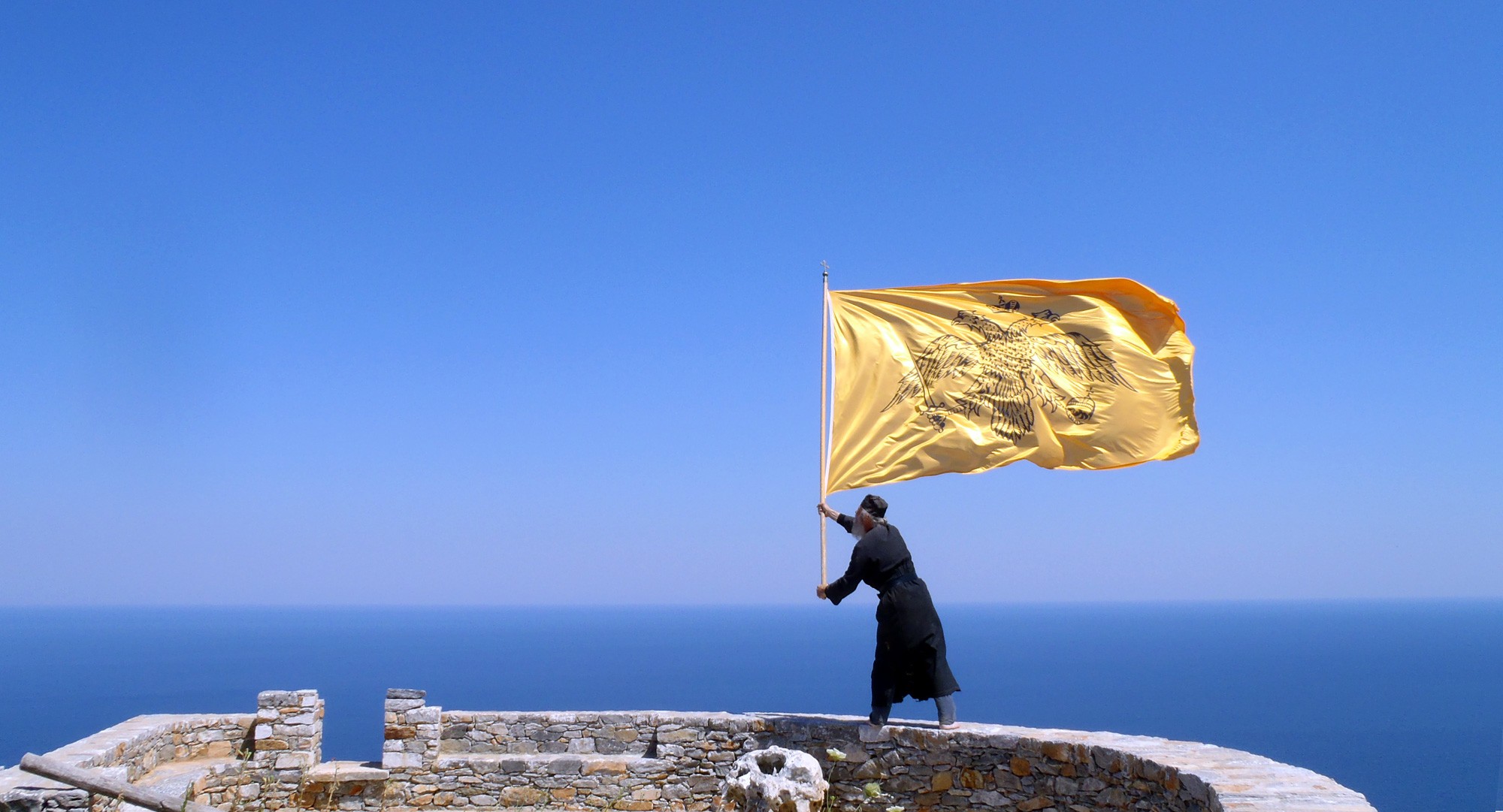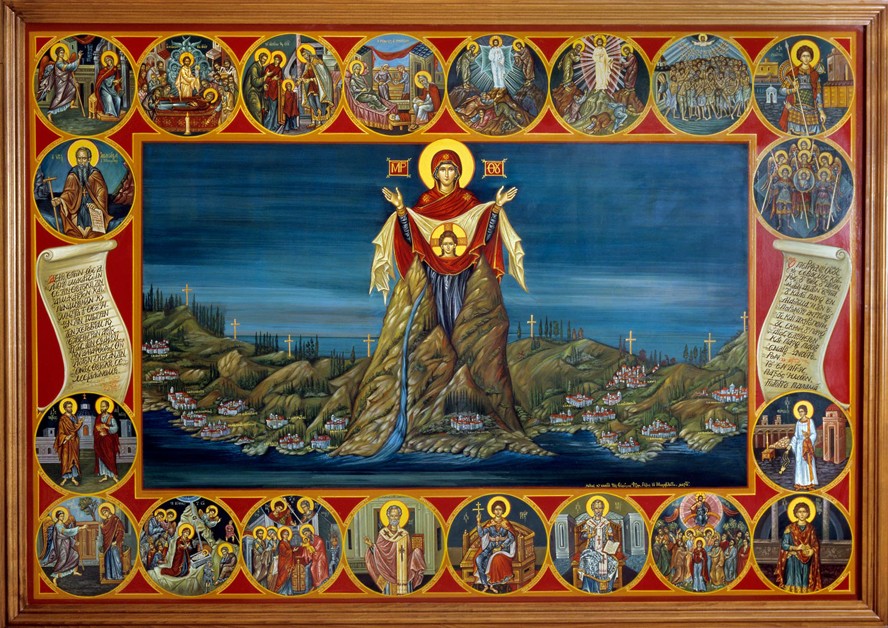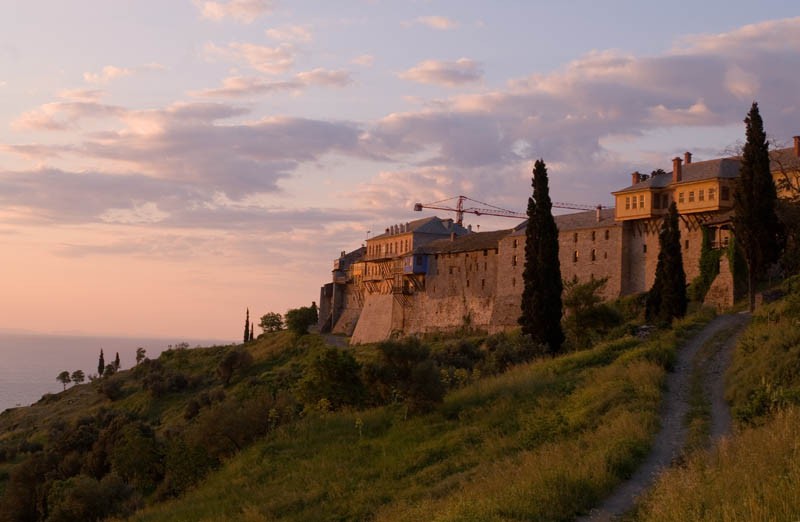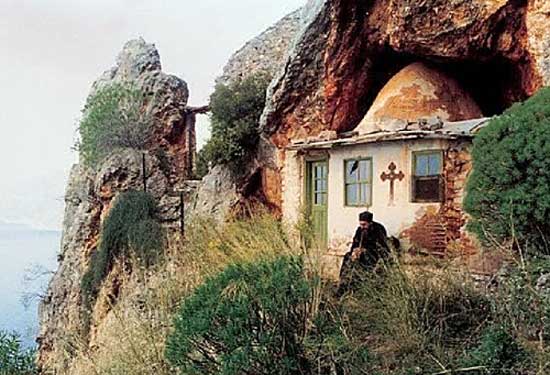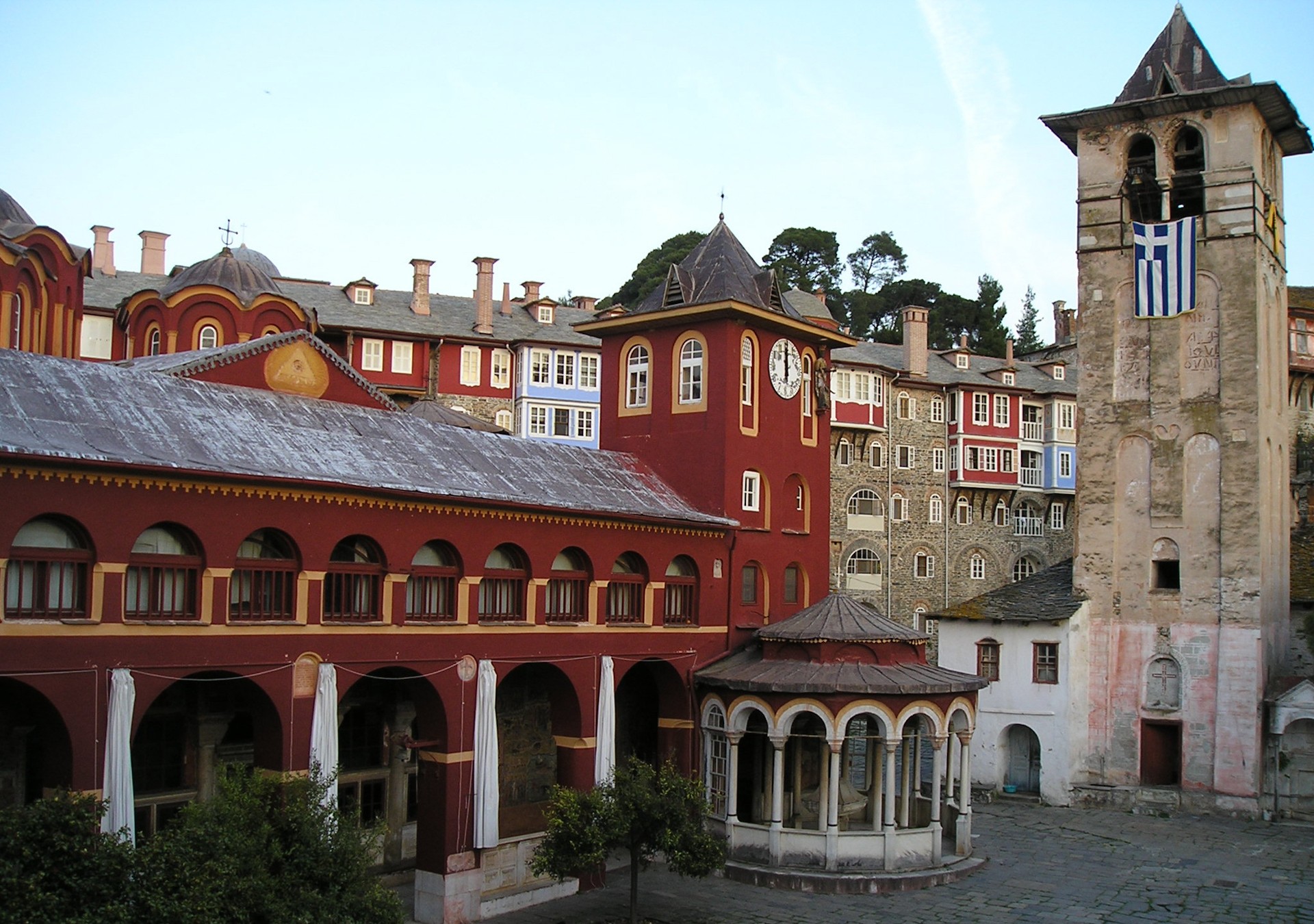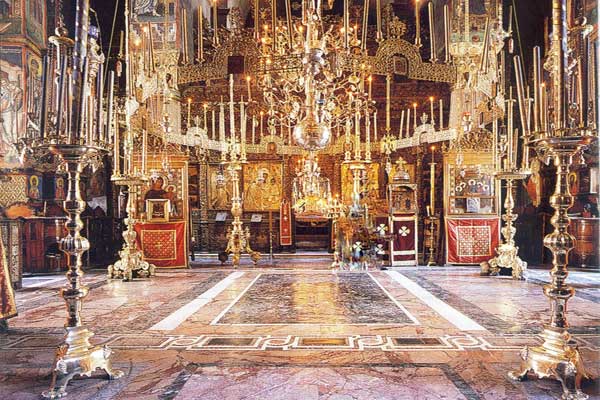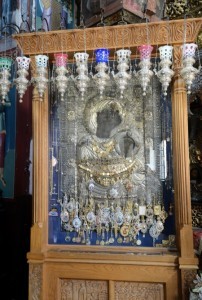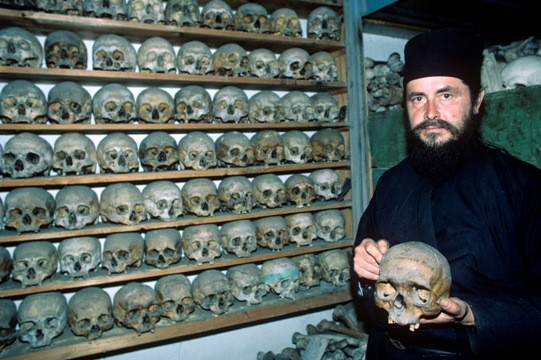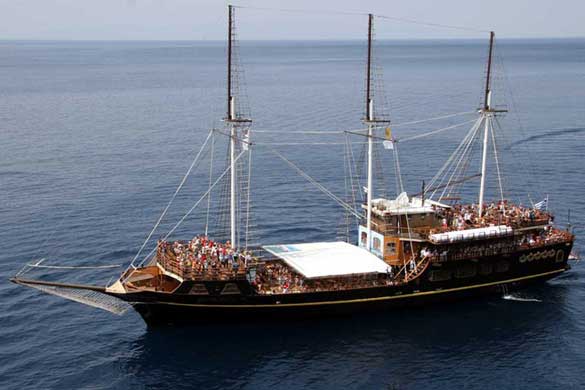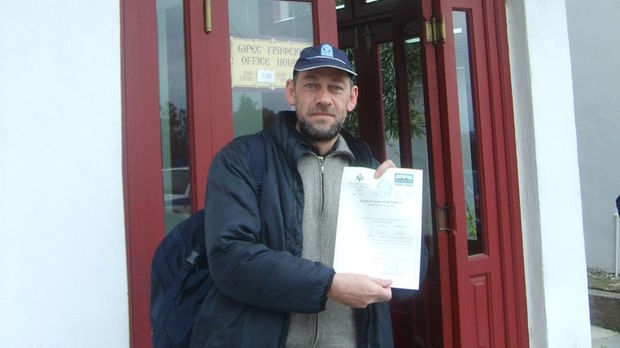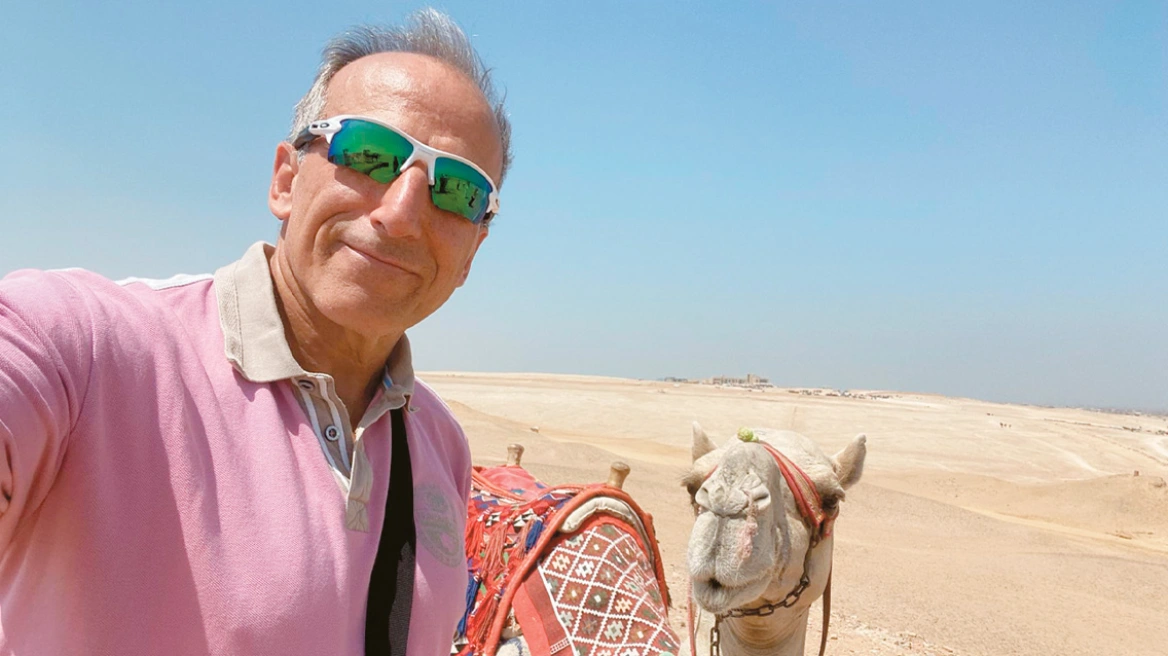Mount Athos, in northern Greece, is set in an area of outstanding natural beauty. The peninsula is a World Heritage Site and autonomous polity within Greece under the official name Autonomous Monastic State of the Holy Mountain and has its own flag.
There’s even a custom of waving the flag every time they fly near… “I love them all like my children. I have also met some up close”, says hermit monk, Joseph.
The site is home to 20 stauropegial Eastern Orthodox monasteries under the direct jurisdiction of the Ecumenical Patriarch of Constantinople. Over 2,000 monks from Greece and other countries live here, isolated from the rest of the world in the oldest surviving monastic community dating back more than 1,000 years.
Legend has it that the Virgin Mary was sailing, accompanied by St. John the Evangelist, on her way to visit Lazarus from Joppa to Cyprus. The ship was blown off its course to this pagan land. The mother of Christ was overwhelmed by the beauty and blessed the region. Since then, the area has been out of bounds to women.
Women are banned entry, the prohibition is called Avaton. This is to make celibacy easier for those who have chosen to come here to pray. Monks feel that the presence of women alters the social dynamics of the monastic community and slows their path towards spiritual enlightenment. The ban was officially proclaimed by Byzantine Emperor Constantine Monomachos in 2046. In the 14th century, Serbian Emperor Dusan the Mighty brought his wife Helena of Bulgaria here to protect her from the plague but she did not touch the ground during her entire village. French writer Maryse Choisy also entered Mt. Athos in the 1920s disguised as a sailor and wrote a book about it. The European Parliament had requested a lifting of the ban on the grounds of gender equality but it remains firmly fixed.
The Monastery of Megisti Lavra is the earliest and biggest foundation on Mt Athos, created by Athanasios the Athonite during the years of Emperors Romanos the Second and Nikiforos Fokas. The monk is considered the founder of Athonite Monasticism and the monastery he founded is the mother monastery of Mt Athos, occupying the first rank in the hierarchical order of the twenty Athonite monasteries.
Hermits live in special cells (kelion), secluded from the world. One of the first historically confirmed hermits was Peter the Athoniatis who found his ship miraculously rooted in the sea of Karavostasi, the Bay of the Standing Ship. He saw this as his heavenly calling and climbed the savage ravine into a cave where he spent fifty years of solitude before being canonised. Another hermit was, Efthymios of Salonica, born around 840 AD.
Vatopedi monastery at the north-eastern part of the Athos peninsula was built in 972. In September 2008, the monastery was implicated in an alleged real estate scandal where monks were accused of trading low-value rate for high-value state property in a deal with the conservative New Democracy government of former PM Kostas Karamanlis. This deal is believed to have cost the state 100 million euros.
The monasteries are a treasure-trove with religious frescoes decorating every wall, rare mosaics and libraries stacked with ancient publications. Imperial Crysobulls (Edicts), ancient coins and golden ecclesiastical artifacts, gifts and offerings from pious Byzantine emperors. Over the centuries, Mount Athos has amassed unique works of art. The Katholikonat the Holy Monastery of Vatopedi is just one example.
Mt Athos’ hagiography industry that is still thriving today, with icons dating from the 10th century. It is estimated that there are as many as 18,000 icons of different styles on the mountain from the austere Byzantine to decadent Renaissance. A number of these are believed to be miraculous. Many miracles have been attributed to the icon of Virgin Mary Portaitissa (Keeper of the Gate), painted by Luke the Evangelist. They say that blood flowed out of the wound of the statue when it was stabbed by a soldier during the period of Byzantine iconoclasm under the rule of Emperor Theophilos (829-842).
The skulls at the small monastery at Skete Prophet Elias have inscriptions scrawled on their foreheads as a type of posthumous inventory system. Monks are buried for three years before the graves are opened and bones transferred to a common burial chamber, except for the skulls.
By the 11th century the number of monasteries had increased greatly. Some say that there were around 180. Unfortunately, pirate raids took their toll and drastically reduced their numbers. These days you can take the pirate ship tour around the mountain with the thousand-year-old history.
Entry is forbidden for women and takes place by ferry boat. Before embarking pilgrims must have been issued a diamoneterion, a form of Byzantine visa. Laymen can either stay overnight or for several days, and each visa only allows access to one monastery.
Ask me anything
Explore related questions

